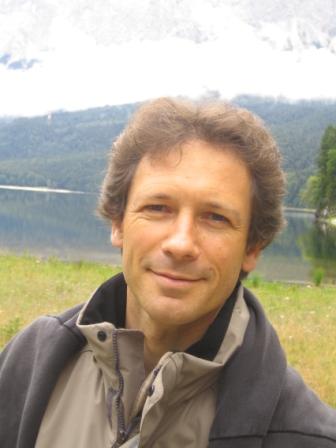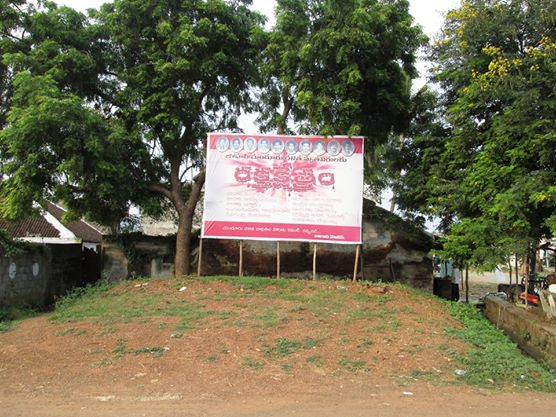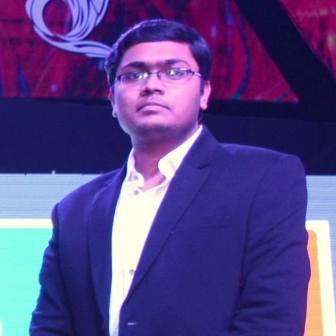Anoop Kumar
 Gujarat assembly elections are here, and Round Table India takes this as an opportunity to post an interview of French Scholar Dr. Christophe Jaffrelot that was first published by the Dalit students’ magazine ‘Insight Young Voices’ (Feb-March, 2008). This interview was taken by Anoop Kumar for the magazine on the eve of the last Gujarat assembly elections, on 27th Novemeber, 2007.
Gujarat assembly elections are here, and Round Table India takes this as an opportunity to post an interview of French Scholar Dr. Christophe Jaffrelot that was first published by the Dalit students’ magazine ‘Insight Young Voices’ (Feb-March, 2008). This interview was taken by Anoop Kumar for the magazine on the eve of the last Gujarat assembly elections, on 27th Novemeber, 2007.
Dr. Jaffrelot is Director of CERI-Sciences Po/CNRS in Paris. He is the author of ‘India’s silent revolution: The rise of the lower castes in North India‘ (2003) and ‘Dr Ambedkar and Untouchability: Analysing and fighting caste’ (2005); both books have been published in Delhi by Permanent Black.
You have been consistently writing on the rise of ‘Hindu’ nationalism in the country. Recently, we all saw Tehelka‘s expose of the involvement of the state in the Gujarat pogrom. The whole country felt the shock, however, the Congress government did not respond at all. Even the Left gave a much muted response. Most of us have been outraged. We knew everything, nothing new came out in this expose and yet, it was shocking for us.
Yeah, the Left and the Centre have remained silent, except, Sonia Gandhi and Digvijay Singh who spoke about the “Hindu terrorists”. I was in Ahmedabad recently to investigate about these issues. Talking about Tehelka, talking about Godhra and the riots, infact, helped Narendra Modi. Dallying with these issues has polarized the electorate and made Hindus vote more for the BJP.
To my mind, there are two trends in Gujarat, which are now very deeply rooted. On the one hand, this state is doing better than many other states economically. People have developed a culture of economic achievements. They are only after money and are much more interested in a managerial form of government rather than democracy.
So, is this the only reason for the communalization of Gujarat?
This is only one aspect. The second aspect is the other side of the same coin. This lack of interest in democracy creates a situation where we don’t care for social harmony, for communal harmony, for resource re-distribution and Muslims are, in that sense, the first casualty. They are considered to be a liability and are still perceived to be a threat. Terrorism is a catchword whose subtext is anti-Muslim.
And so you are more money-oriented, more materialistic, less democratic and you don’t care for the minorities. You don’t care for the rule of law. What concerns me the most is the fact that the rule of law is in a bad shape in this state. This state is going the authoritarian way, people are intimidated, cultural policing is developing everywhere, the Patel girls cannot marry anybody, they are somehow ‘rescued’ by Bajrang Dalis and the MS University, Baroda, cannot develop the kind of art they want to develop. Can you believe that Prof. Panniker is now sitting in Delhi, unable to work and his student Chandramohan is in Kerala without a degree?!
This is showing a new India, a new face of India.
Let us see what happens in the Gujarat Assembly elections. But if the Left and Congress are not taking any strong stand against the Hindutva forces there, it is because they know that if they want to win the coming elections, they have to be soft on these issues.
But don’t you think that this soft-pedaling won’t help?
Gandhi would say and that is one of the things he got right – the end is in the means. If to win elections you just have a soft hindutva approach – you don’t nominate Muslim candidates, don’t highlight communal issues, you also highlight the issue that Modi is highlighting like terrorism – well, then you take the risk of becoming like him. Means and ends cannot be divorced. So I agree it might be a self-defeating approach that the local Congress has adopted – Sonia Gandhi and Digvijay Singh did otherwise. It might be committing suicide in the long run, but this is the tactical decision that Congress and others have made. A number of anti-Modi NGOs are now supporting Congress because they want to get rid of that man and that is their priority. Because if they won’t, then five more years of Modi’s rule!

Bloodbath in Gandhi’s Gujarat
~
Gujarat has a history of anti-reservation riots against Dalits and backwards in the early 80s and from then onwards, this anti-Muslim propaganda started. Do you see any kind of linkages between the two?
Yes, of course. The two points that I have mentioned are applicable here also. On the one hand, you have meritocracy, an economy-oriented approach towards politics, so you have to work hard. This is the work ethics. And on the other hand, you don’t want these minorities Dalits, Muslims to really get their share.
How come, then, the RSS or the Hindutva forces in Gujarat, are able to brainwash some of the Dalits and Tribals to involve themselves in riots against Muslims?
To my mind, the main problem in Gujarat is that there is no strong Dalit movement; there is less Dalit consciousness in Gujarat compared to many other Indian states. We cannot find many Ambedkarites in Gujarat.
Another state where there is no Dalit movement is West Bengal. Another state where Dalits and Muslims have been at the receiving ends both in education and in jobs, inspite of the large concentration of both Muslims and Dalit population. I will just give you an example from my own experience of JNU where a large number of Bengali students come, but one can hardly find any Bengali Dalit student among them. You will find Dalit students from UP, from Maharashtra, from Tamil Nadu, from Andhra but hardly any from West Bengal.
Well, first of all, you have to explain this very peculiar situation, where the Left-led state is neither Dalit-oriented, nor Muslim-oriented as communists don’t believe in caste or community, they believe in class. And, therefore, they don’t want to take caste into account.
But, it can also be very convenient. It means that the bhadralok can continue to rule by saying that they don’t believe in caste. In a way, the Leftist leaders are saying: “Well, forget about your caste; be with us as members of the proletariat”. This enables them to remain in power. In fact, the social profile of CPI (M) leadership in West Bengal shows that most of them are from very elite ‘upper’ caste background.
What is your opinion about the Nandigram issue and the role of the Left-led West Bengal Government?
So far it was not bad at all since the Left-led government had implemented some land reforms in Bengal and was truly secular. When there are 25% Muslims in the state and there have been no riots against them for such a long time, it means that something has really been taken care of.
The problem is that with this new CM Buddhadeb Bhattacharjee the situation is changing. And this is changing not only because of him but because of the changes occurring in the larger context of Liberalization, Privatization and Globalization. You have to get industrialized and get investment from the private sector and how do you do that? You have to create SEZs, you have to go abroad and bring money back. And you do at the expense of those who are tilling their lands because you need to get their land at one point. It is part of his strategy, it is part of India’s strategy, it is part of Modi’s strategy. SEZs have the same kind of compulsions. You have to remove the people from their land and give away to those who have big money.
The most shocking thing that has happened in Nandigram is that the state government has divided its own people into two, those who are with the party and those who are not with the party. And this feeling of Us and Them has resulted in such brutal repression. However, the opposition, including the Dalit activists, has always talked about the brutal ways with which the CPI (M) government has responded to them in the past.
This party still has many authoritarian features. It is not a democratic party in that sense. They are simply closing ranks and building enemies be they the naxalites, be they the ‘imperialist foreign hands’. They are not debating, investigating among themselves. There should be some soul-searching exercise after Nandigram. But this is not happening. That is why Delhi-based intellectuals are leaving the party. They have understood what French intellectuals understood in the 1960s. For decades the French intellectuals swallowed the Communist propaganda – Stalin, the Czech coup, the Hungarian coup but later they discovered that they had to withdraw from this nonsense.
The next elections will be a test time for the CPI (M) and as of now the only change we can anticipate is in terms of policies because they will not be able to pursue the same polices they have been pursuing regarding SEZ.
The entire handling of the Nandigram issue is sad as it will weaken the secular forces at the centre. And in the state, there is no alternative. Whom will you turn to Trinamool Congress, Congress or BJP? And again, there is no Dalit party.
In both Kerala and West Bengal, the Dalit consciousness is weak despite both the states having a history of very strong Dalit and anti-caste movements like the Namashudra movement and the Rajbansis movement of West Bengal and Ayyankali and Narayana Guru-led movements in Kerala.
But do you think these were Ambedkarite movements? There is a difference. Like the Arya Samaj movement, these movements were more sanskritisation-oriented. They could be very easily co-opted. In fact, they have been co-opted. We cannot call them Dalit movements. May be the Adi-Dharmi movement in Punjab was slightly different but take the example of Narayana Guru’s movement of Kerala. BJP-RSS is very happy with him.
Yeah, they take the example of Narayana Guru and tell Dalits that this is the way for their emancipation and to remain in the Hindu fold.
Exactly. It is very interesting.
Coming back to the question of an alternative political force, how do you envisage the role of Dalit politics?
The need of Dalit politics can be best understood when you analyze the socio-political situation of states where there is no Dalit politics. Absence of strong Dalit movement makes a big difference in Gujarat and in West Bengal.
Since last so many years, you have been visiting and writing extensively on Dalits in India. A Dalit woman is now ruling one of the very important states. Dalit movement post-90s has come a long way. What is your opinion about it?
Dalit movement is definitely on the rise and we must try to understand the reasons behind that. The turning point, for me is 1989. In 1989, the BSP did better than the BJP in UP. Reservation policies, at last, enabled the Dalit community to get leaders and this is the most important thing you need. Some of these leaders, Kanshi Ram and his colleagues built organizations (BAMCEF, DS4, BSP) by adapting Ambedkar’s thought to the present situation.
Kanshi Ram to my mind is a true Ambedkarite, in the sense that he has really adapted the motto, the ideas, the technique, and the pragmatic approach of politics that Ambedkar had evolved. You make alliances with whoever you can, just to climb a ladder. When you reach a point, get rid of these people. Why not? It is certainly offensive but remember, Ambedkar in the Viceroy Council in 1940s, had said that I am not cooperating with the imperialist but I am helping my people.
Kanshi Ram was not cooperating with the BJP, he was preparing the ground for the next step. But we must not focus only on the leaders and their tactics only. The main point lies certainly in their ground work. Kanshi Ram toured the country for so many years, formed the BAMCEF and created a class of politically-conscious Dalits.
Do you think the anti-Mandal agitation of the early 90s galvanized the Dalits? It was the first time that caste was debated on the public platforms?
It was a plus point but the momentum was always there. In 1989, BSP secured 11 percent votes in UP and this was pre-Mandal. But, of course, Mandal accelerated the process.
Coming back to the anti-Mandal agitation, we had organized youth rallies in favour of reservation for the OBCs. However, the participation of OBC students and youth was very less. They are not there with us when we fight, when we organize. They seem to be completely absent in all public spaces. Hence, within the Dalit movement, there are several voices which opposed many of us saying that it is the OBCs who are exploiting the Dalits in the villages and, above all, they are not coming forward for their own interest. What do you have to say on this?
‘OBC’ is not a homogenous category, possibly because they do not suffer from the same stigma as the Dalits whose ancestors have been looked as “Untouchables” for so many centuries. Also, OBCs and this is related to the previous point did not get an Ambedkar. They don’t have many intellectuals either. There are some Socialist intellectuals who are, of course, pro-reservation but at the same time they are not so much comfortable with caste.
This is a big challenge for Dalit activists as you have to find partners among OBCs in this battle. You have to identify them. I think it has to be done at the caste level rather than at the OBC level. You will not find an OBC movement. But one may certainly find caste associations which are politically conscious. In UP and Bihar you now have Yadavs, Kurmis and Lodhis aligning themselves with different leaders.
Yes there have been such instances. In Delhi, there are such caste organizations, like those of malis and mauryas, who have started sharing their platforms with Dalit activists on anti-Brahminism agendas.
True. Dalit movement must target a pan-Indian OBC caste like malis. Unlike castes, which are state-specific, they cannot be parochial. Also, malis have a national hero Jotiba Phule who also means a lot for Dalits. OBC is a very heterogeneous category. In fact, the Indian state has been diluting this category by adding more castes to it.
Diluting the OBC category is one ploy to obstruct the growing anti-Brahminical agenda. Another ploy is to aggravate and highlight the contradictions among the non-‘upper’ caste communities. The biggest example of the same is the sensational coverage of the gujjar-meena confrontation in Rajasthan by the mainstream media. Actually it was media which flamed that. They carried inflammatory interviews and aired them 24×7. The national dailies printed such photographs like that of three meena youth riding a bike and brandishing revolvers on their first page. Then, they gave the impression to the whole country that reservation is dividing the society and is leading to a civil war!
Either you stuff new castes in these categories to just make it lose any meaning or you show how reservation-based caste wars are weakening India. These are deliberate acts, to create public opinion against reservations. When it will come to the question of reservation in the private sector, they will say, look, this is creating this mess, let us get rid of reservation. But what is the alternative? Reservation is not the panacea, we all know that. If we can do without reservations, we will be very happy but there is no alternative. Do something different and above all stop discriminating on the basis of caste.
There is a growing trend, especially in the mainstream media, to glorify ‘Indian youth’ by creating its image as a homogenous category, that is nationalist yet progressive, secular, anti-caste and gender-neutral. In such a situation, do you foresee any such youth movement that is against the hegemonic and exploitative structures of the society like caste, communalism and patriarchy?
No, I don’t think so. I don’t think that there can be a homogenous youth movement. The youth is heavily divided between caste and class. Youth of middle-class is first of all middle-class. They don’t involve themselves in social movements. Their parents might have had some kind of social consciousness. But today’s middle-class youth runs after money, wants to have a good life, travel abroad and just doesn’t care. All these people will live behind the big walls, in “golden ghettoes” with private hospitals, private schools. It is the youth more than the elderly people who are doing that.
Therefore, to my mind, the only solution is to lobby and put pressure on these people and to show them that the only way to defuse tensions, which may make the Indian train derail, is to make concessions. If they fear for the growth rate, then they will do something. You cannot rely on their generosity; you cannot rely on their goodwill alone. They have never enough for themselves.
You have to achieve the bargaining power and this was precisely the strategy of Ambedkar and Kanshi Ram. You build a political force and then you bargain.
What do you think about the Dalit students’ movement?
Well, what I have seen in universities like JNU or Pune University is striking. This is not only a social movement, but a kind of brain power. It is important for the Dalit movement to have young leaders who are so articulate because in the end, it will acquire maturity and have a nationwide impact.
For the moment, you don’t hear too many Dalit voices. Look at the newspapers. Who are the Dalits whom we hear? We hardly come across the arguments of Dalit intellectuals on, say, reservations. There are Dalit intellectuals but they have been made invisible. They are only interviewed on events. Dalit students are articulating thought processes, which will definitely make a difference in the near future.
May be, one day, India will not need any Dalit movement any more; caste will be gone. This is the aim, no?
~~~
Illustration by Rajesh Kumar, a PhD scholar from Jawaharlal Nehru University, New Delhi.










